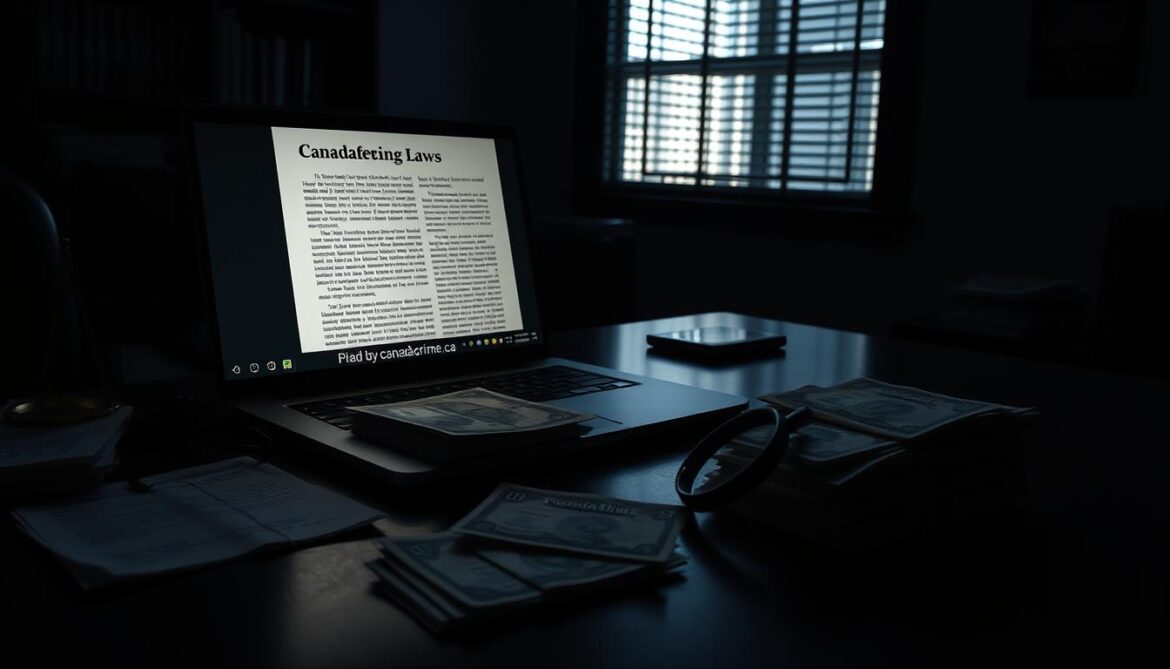Fake products cost the Canadian economy over $20 billion yearly. This figure represents financial losses and threats to businesses and consumers. Counterfeit goods have become a sophisticated criminal enterprise requiring advanced legal responses.
Canada tackles this issue through various legal channels. The Copyright Act, Trade-marks Act, and Combating Counterfeit Products Act protect intellectual property. These laws define illegal reproduction and set penalties for violators.
Fake products pose serious safety risks beyond economic impact. Counterfeit auto parts, electronics, or pharmaceuticals bypass quality control measures. This puts consumers at risk of harm.
Understanding the legal landscape is crucial for businesses and consumers. It’s your first line of defense against counterfeit goods. This guide explains how Canadian law defines and fights unauthorized reproductions.
We’ll explore the intersection of intellectual property protection and consumer rights. You’ll learn how to protect your business assets and ensure your purchases are legitimate.
The Scope of Counterfeiting in Canada
Counterfeiting in Canada has grown into a complex criminal enterprise. It now goes beyond fake luxury goods sold by street vendors. Advanced manufacturing and distribution networks make detecting fraudulent products increasingly difficult.
Today’s counterfeit operations use sophisticated techniques to infiltrate legitimate retail channels. This poses a significant challenge for both businesses and consumers.
Current Statistics and Trends
The Royal Canadian Mounted Police (RCMP) reports counterfeiting as a major criminal problem. It affects numerous industries and has evolved from a minor concern.
About 90% of counterfeit goods in Canada come from overseas. China and Russia are the main sources. Fake products now include electronics, pharmaceuticals, auto parts, and even food.
Online marketplaces have become hotspots for counterfeit distribution. Social media platforms are increasingly used as sales channels.
- Approximately 90% of counterfeit goods in Canada originate from overseas, with China and Russia being primary sources
- Counterfeit products now extend beyond luxury items to include electronics, pharmaceuticals, auto parts, and even food products
- Online marketplaces have become hotspots for counterfeit distribution, with social media platforms increasingly used as sales channels
Modern counterfeiting operations use advanced technology to create near-perfect replicas. This makes it hard for even experienced retailers to spot fake products.
Economic Impact on Canadian Businesses and Consumers
Counterfeiting costs Canada’s economy between $20 billion and $30 billion annually. This estimate comes from the Manufacturers and Exporters of Canada.
The impact goes beyond lost sales. It damages brand reputation and increases security and legal expenses for businesses.
Counterfeiting is not a victimless crime. It undermines legitimate businesses, threatens jobs, and often funds organized criminal activities that harm our communities.
Companies must invest in detection technologies and training to protect their intellectual property. This leads to higher costs for consumers and reduced innovation.
Consumers face several consequences from counterfeiting:
- Higher prices for legitimate products as companies offset security costs
- Reduced innovation as businesses divert resources to anti-counterfeiting measures
- Potential job losses in manufacturing and retail sectors
- Safety risks from substandard counterfeit products lacking proper quality controls
Counterfeiting affects nearly every sector of the Canadian economy. As counterfeiters adapt to new technologies, detection and enforcement challenges continue to grow.
Defining Counterfeiting Under Canadian Law
Canadian law defines counterfeiting as a violation of intellectual property rights. This definition helps businesses and consumers identify rights violations. It also outlines legal remedies for those affected by counterfeiting.

Legal Definition and Classifications
In Canada, counterfeiting refers to unauthorized use of registered trademarks. This includes reproduction or imitation of trademarks without the owner’s consent.
Canadian law aligns with international standards, particularly the TRIPS agreement. TRIPS defines counterfeit goods as products with unauthorized trademarks that are identical to registered ones.
The law classifies counterfeit goods based on the type of infringed intellectual property. For legal classification, two elements must be present: unauthorized use and intent to deceive.
Differences Between Counterfeiting and Other Fraud Types
Counterfeiting involves trademark violations, while piracy refers to copyright infringements. This distinction determines which legal provisions apply to specific cases.
Counterfeiting differs from general fraud in key aspects. Fraud involves deception for financial gain without infringing on intellectual property. Fake product identification mimicking legitimate trademarks is counterfeiting.
Counterfeiting also differs from passing off. Passing off misrepresents goods as those of another company without copying trademarks. Counterfeiting directly reproduces protected marks or designs.
Knowing these legal distinctions helps identify applicable laws and remedies. This knowledge is useful when dealing with counterfeiting activities affecting your business or purchases.
The Criminal Code of Canada on Counterfeiting
Sections 448-462 of the Criminal Code of Canada tackle currency and document counterfeiting. These laws set out offenses, prosecution requirements, and penalties. They’re crucial for businesses and individuals to understand and follow.
The Code outlines specific crimes and punishments for counterfeiting activities. It covers making fake money, possessing it, and using it. The law also addresses counterfeit government marks and documents.
Prosecutors must prove both the act and intent in counterfeiting cases. They need to show that the accused knowingly created or used fake items. Genuine ignorance can be a valid defense in court.
Sections 448-462: Detailed Provisions
Section 449 makes creating counterfeit money illegal. Section 450 deals with possessing fake currency. These crimes can lead to maximum penalties of 14 years imprisonment.
Section 452 covers using or trying to use counterfeit money. Even if you didn’t make it, knowingly using fake cash is illegal. Sections 456 and 457 address fake government marks and documents.
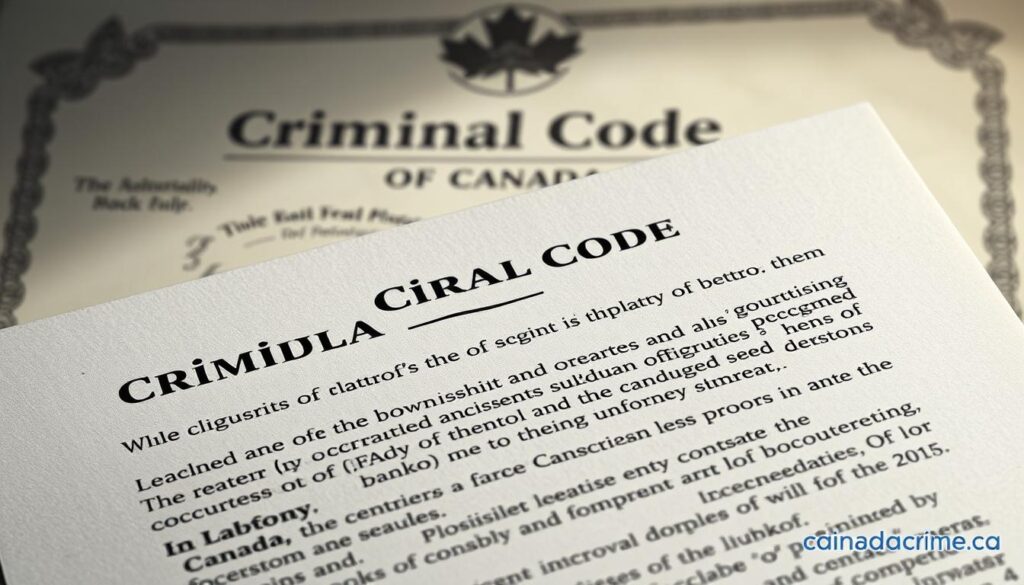
Possession vs. Production: Legal Distinctions
Canadian law treats possessing and producing counterfeit items differently. This affects how cases are prosecuted and potential consequences. Possession charges require proof of knowing control over fake items.
Courts often look at whether the possession was for personal use or distribution. Commercial intent can lead to harsher penalties. It suggests a bigger threat to the economy.
Production charges involve creating counterfeit items. They carry much heavier penalties. The law sees manufacturers of fake currency as a greater risk than mere possessors.
| Offense Type | Key Elements | Maximum Penalty | Common Defenses |
|---|---|---|---|
| Possession | Knowledge, control, intent to use | 5-10 years imprisonment | Lack of knowledge, no intent to distribute |
| Production | Creation, manufacturing, alteration | 14 years imprisonment | Artistic purpose, lack of fraudulent intent |
| Distribution | Selling, trading, uttering | 14 years imprisonment | Unknowing participation, duress |
Recent Amendments and Legislative Updates
Canada has beefed up its anti-counterfeiting laws recently. The Combating Counterfeit Products Act of 2014 made big changes. It amended both the Copyright Act and Trade-marks Act.
This law created new offenses for trademark counterfeiting. It bans possessing, making, and exporting fake trademarked goods and packaging. Border officials now have more power to stop suspected fakes.
The Act lets intellectual property owners ask border officials to detain suspected counterfeits. This helps businesses protect their brands from fake imports. It also created new ways for rights holders to take legal action.
Currency Counterfeiting: Laws and Enforcement
Canada fights counterfeiting with advanced security, strict law enforcement, and tough penalties. This protects economic stability and public trust in our money. The Bank of Canada, police, and courts work together to stop fake currency.
Bank of Canada’s Anti-Counterfeiting Measures
The Bank of Canada leads counterfeit prevention by improving banknote security. Modern bills have many anti-counterfeit technologies that make copying very hard.
Polymer notes have see-through windows with color-changing portraits. They also have raised ink you can feel. This helps everyone, including those with poor vision, check their money.
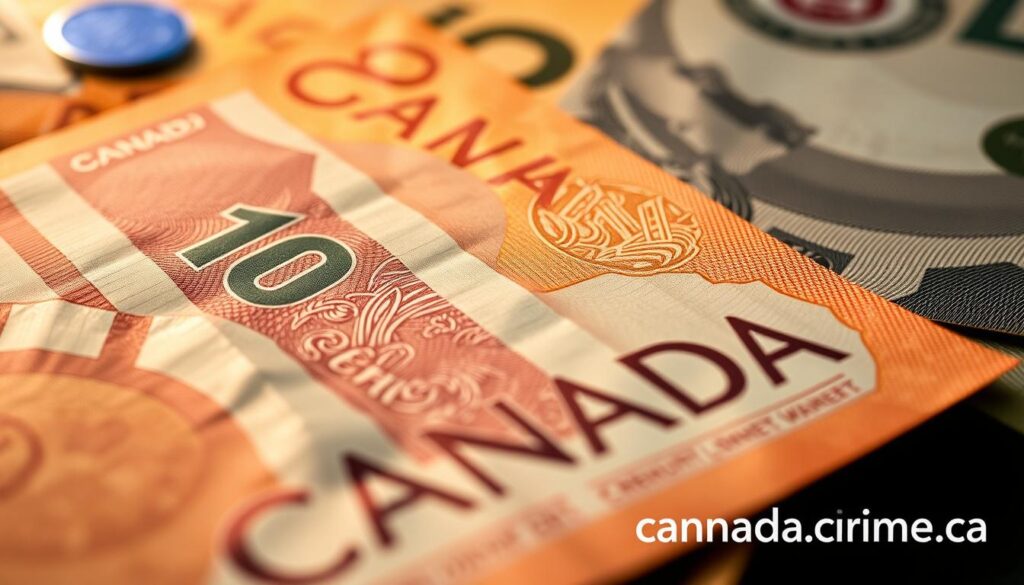
Hidden features include tiny print and UV-visible elements. The Bank teaches Canadians to “feel, look, flip” when checking money. This helps people spot real bills quickly.
RCMP Integrated Counterfeit Enforcement Team (ICET)
The RCMP’s special ICET unit hunts down counterfeiters. They use forensics, financial tracking, and police work to catch criminals. ICET works with banks and global partners to share info and take action.
They don’t just catch fakers. They break up entire criminal networks. The team uses science to link fake money to specific tools and gangs.
“Currency counterfeiting is not a victimless crime. It damages our economy, hurts businesses, and ultimately costs every Canadian. Our team is committed to protecting the integrity of Canada’s currency through aggressive investigation and prosecution.”
Sentencing Patterns and Notable Case Studies
Canadian courts punish counterfeiters harshly. Sentences depend on fake quality, amount made, and the person’s role. The law aims to protect our economy.
| Offense Type | Maximum Penalty (Indictable) | Maximum Penalty (Summary) | Aggravating Factors |
|---|---|---|---|
| Production of Counterfeit Currency | 14 years imprisonment | N/A (Always indictable) | High quality, large quantity |
| Possession for Circulation | $1,000,000 fine and/or 5 years | $25,000 fine and/or 6 months | Organized crime connections |
| Uttering (Using) Counterfeit Money | 14 years imprisonment | $25,000 fine and/or 6 months | Multiple incidents, business targets |
| Possession of Instruments | 14 years imprisonment | N/A (Always indictable) | Sophisticated equipment, commercial scale |
In 2019, a Toronto gang made $2.6 million in fake $100 bills. The leader got 8 years in prison. Others got 3-5 years. The judge stressed the economic harm and the operation’s complexity.
A BC man got 5 years for making high-quality fake $50s. His skill and the threat to public trust were key factors. These cases show how seriously Canada takes counterfeiting.
Intellectual Property Counterfeiting in Canada
Canada’s legal system protects against intellectual property counterfeiting. It covers trademarks, copyrights, patents, and industrial designs. The Combating Counterfeit Products Act strengthened these protections with new civil and criminal remedies.
Trademark Infringement Laws and Remedies
Canada addresses trademark counterfeiting through civil and criminal legal channels. The Trade-marks Act allows registered trademark owners to pursue remedies against counterfeiters.
These remedies include court injunctions, monetary damages, and profit recovery. Counterfeiters may also have to deliver or destroy all fake goods.
The Combating Counterfeit Products Act created new criminal offenses for trademark counterfeiting. Penalties include fines up to $1 million and 5 years imprisonment for large-scale violations. Border officials can now detain suspected counterfeit goods without a court order.
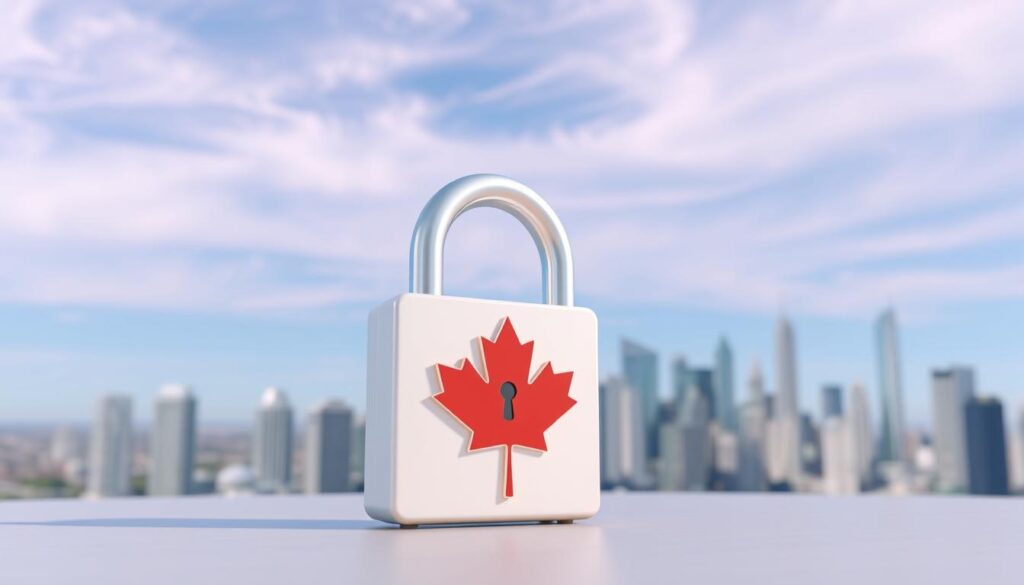
Copyright Protection Framework
Copyright protection in Canada applies automatically to original creative works. Registration provides extra legal advantages. The Copyright Act offers strong protection against piracy and unauthorized reproduction.
Counterfeit copyrighted works can lead to statutory damages up to $20,000 per infringement. Criminal penalties for commercial infringement include hefty fines and imprisonment. The Copyright Modernization Act addressed digital piracy and online service provider liability.
Effective brand authentication often combines copyright and trademark protections. This creates multiple layers of legal security for multimedia content, software, and distinctive product designs.
Patent and Industrial Design Counterfeiting
Patent and industrial design counterfeiting pose unique challenges for Canadian businesses. The Patent Act and Industrial Design Act provide specialized protections for these intellectual properties.
Patent infringement remedies include injunctions, damages, and profit accounting. Industrial design protection lasts up to 15 years for manufactured articles’ visual features. Detecting these violations often requires specialized technical knowledge.
The Federal Court of Canada has exclusive jurisdiction over patent cases. Recent cases have set stronger precedents for damages awards. This enhances deterrence against sophisticated counterfeiting operations targeting patented technologies.
Cross-Border Counterfeiting and International Cooperation
Canada fights counterfeiting beyond its borders through partnerships and border control measures. Global supply chains make enforcement tricky. Canada has developed specialized strategies and joined worldwide anti-counterfeiting initiatives.
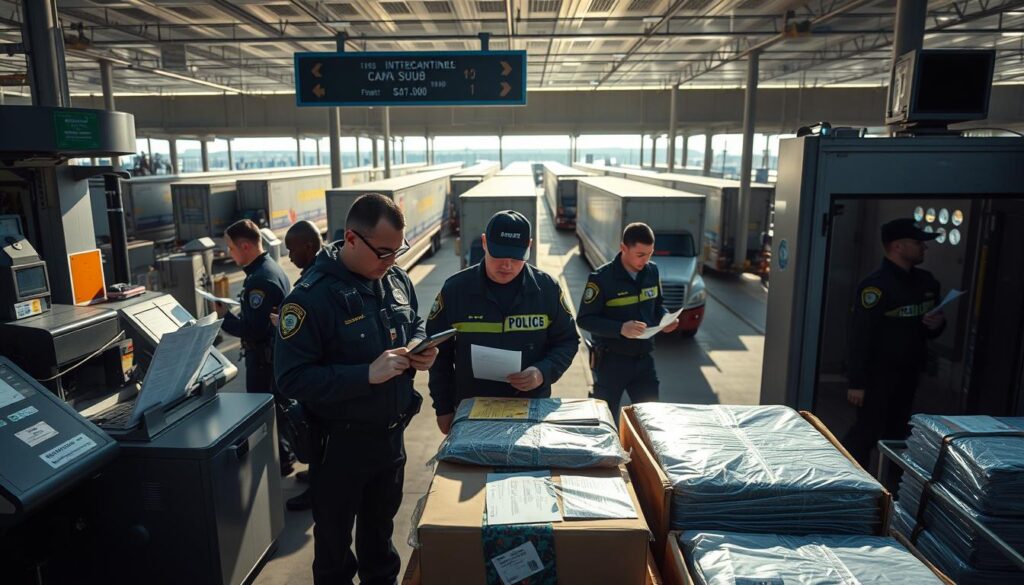
Canada Border Services Agency (CBSA) Enforcement Powers
The Combating Counterfeit Products Act expanded CBSA’s authority at Canadian borders. Customs officers can now detain goods suspected of copyright or trademark infringement without a court order.
CBSA can share information about detained shipments with rights holders who filed a “Request for Assistance” (RFA). This program helps officers identify potential counterfeits during inspections.
Rights holders have a limited time to examine samples and start court proceedings. This approach enhances security while respecting legal processes.
The Act exempts personal use items. Travelers with small quantities of potentially infringing goods aren’t usually subject to these measures.
International Treaties and Collaborative Initiatives
Canada participates in international frameworks to combat cross-border counterfeiting. As a WTO member, Canada follows the TRIPS agreement, which sets global intellectual property protection standards.
Through WIPO, Canada helps develop consistent approaches to intellectual property enforcement. These efforts include information sharing and coordinated anti-counterfeiting measures.
Trade agreements enhance Canada’s international cooperation. CUSMA contains provisions for intellectual property protection across North American borders.
These initiatives have produced results. Joint operations have disrupted major counterfeiting networks targeting Canadian consumers. Canada’s participation helps protect both domestic and international markets from fake products.
Anti-Counterfeiting Technologies and Authentication Methods
Canada uses many layers of tech to stop counterfeiting. These tools make it harder for fraudsters to create fakes. New methods protect businesses and consumers from harmful counterfeit goods.
These innovations help keep Canada’s economy strong. As criminals get smarter, our defenses get better too.
Security Features in Canadian Currency
Canadian money has top-notch security features. In 2011, we switched to polymer-based notes for better protection. Each bill has transparent windows with holograms that change color when tilted.
The bills also have raised ink you can feel. This helps you check the bill quickly. Tiny text is printed all over, which is hard to copy.
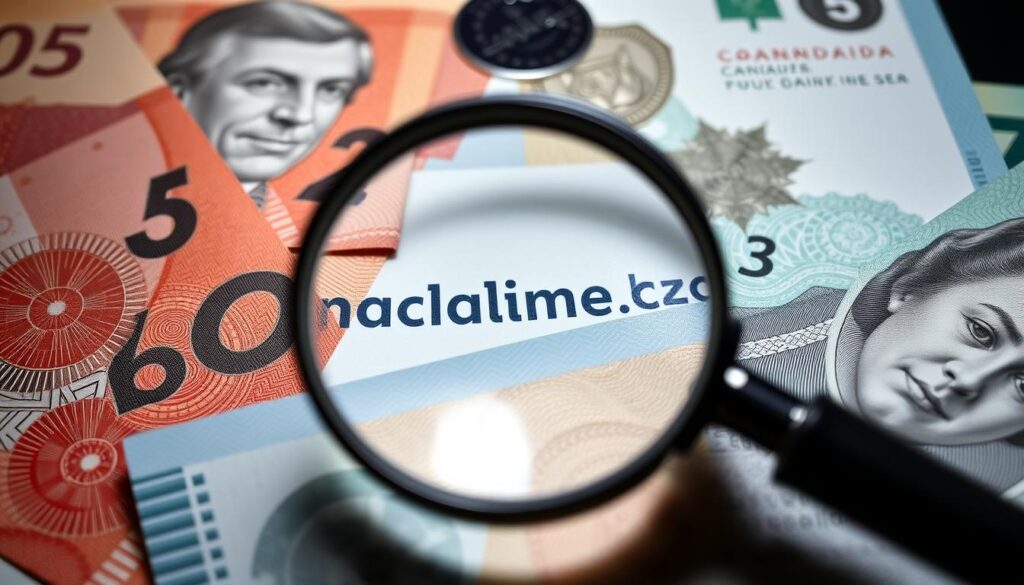
Under UV light, hidden features show up. These include fiber patterns and glowing elements. The Bank of Canada often updates these features.
Product Authentication Technologies
Canadian businesses use various ways to protect their products. Product authentication technologies help keep brands and consumers safe. QR codes and RFID tags let you check items with your phone.
Special labels and seals are hard to copy. They often have many layers of security. Some are easy to see, while others need a magnifying glass.
Chemical markers and special inks offer more protection. Some change color with heat. Others show hidden patterns when tested.
Supply Chain Security Measures
Securing the whole supply chain stops fakes from entering markets. Track-and-trace systems watch products from factory to store. This makes it harder for fake goods to slip in.
Blockchain tech is great for supply chain security. It creates unbreakable records of each move. You can check a product’s whole journey easily.
Tamper-evident seals and special barcodes show if someone messed with a package. Many Canadian makers use these with digital checks. This creates many layers of security.
Protecting Your Business from Counterfeiting Activities
Canadian businesses must develop strategies to safeguard their products from sophisticated counterfeiting techniques. Counterfeiting impacts more than sales. It can damage brand equity, customer trust, and create liability concerns. Proactive protection requires understanding vulnerabilities and implementing targeted safeguards.
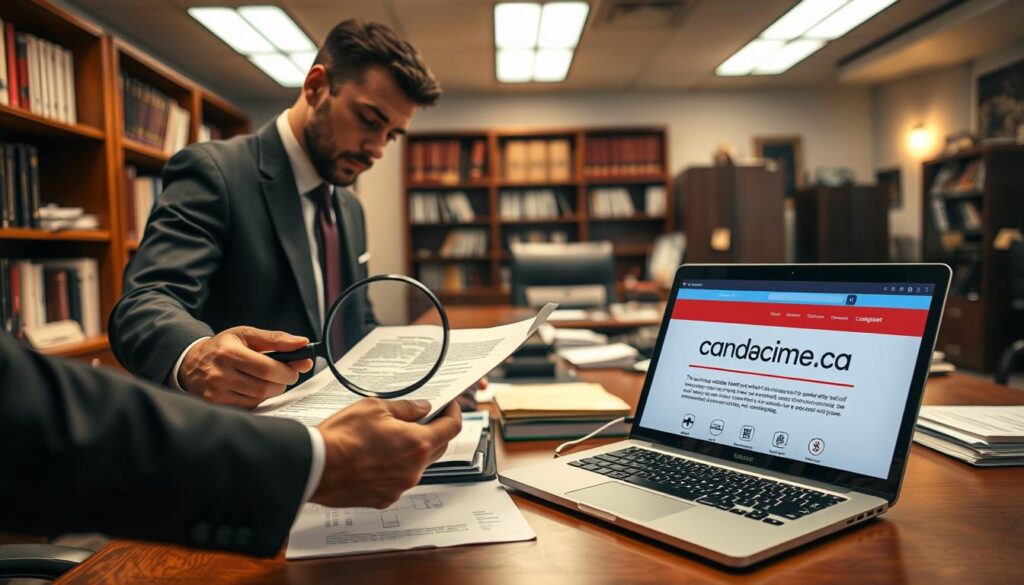
Risk Assessment and Vulnerability Analysis
Start counterfeit prevention with a thorough risk assessment of your business operations. Look for weaknesses in product design, manufacturing, distribution, and retail environments that counterfeiters might exploit.
Consider factors that increase your vulnerability. High-value, premium-priced products with strong demand face greater counterfeiting risks. Businesses in pharmaceuticals, luxury goods, electronics, and branded apparel should be extra cautious.
Evaluate your intellectual property assets and their protection status. Identify gaps in trademark registrations, copyright filings, or patent protections. This analysis will form the foundation of your anti-counterfeiting strategy.
Preventive Strategies and Best Practices
Implement robust brand authentication measures to protect your products. Use overt security features like holograms or QR codes that consumers can verify. Add covert features known only to your company and authorized partners.
Secure your supply chain by vetting suppliers, manufacturers, and distributors carefully. Use tracking systems to monitor products from production to retail. Small businesses facing counterfeit manufacturing should establish clear chain-of-custody documentation.
Register your intellectual property with the Canadian Intellectual Property Office. Record trademarks with the Canada Border Services Agency (CBSA). This allows border officials to detain suspected counterfeit goods. The Canadian Anti-Counterfeiting Network (CACN) offers resources for effective protection strategies.
Legal Recourse and Enforcement Options
Document counterfeit discoveries thoroughly. Collect samples, take photos, and record details about where and when they were found. This evidence is crucial for any enforcement action you pursue.
Choose enforcement options based on your situation and resources. Minor infringements may be resolved with a cease and desist letter. For serious cases, file complaints with the RCMP, local police, or Canadian Anti-Fraud Centre.
Civil litigation allows you to seek damages and destruction of counterfeit goods. It can be effective against persistent counterfeiters or when significant financial harm has occurred. Combining preventive measures with strategic enforcement often yields the best protection against counterfeiting.
Consumer Protection and Awareness
Learn key techniques to spot fake products in Canada. Understand the reporting channels available to you. These tools protect you from financial loss, safety hazards, and privacy risks.
How to Identify Counterfeit Products
Check packaging quality to spot fakes. Look for clear printing, accurate colors, and correct spelling. Verify authentication features like holograms on cards or security threads in banknotes.
Always check serial numbers on official manufacturer websites. For medicines, look at sealing, pill appearance, and pharmacy sources. With luxury items, inspect stitching, hardware weight, and logo accuracy.
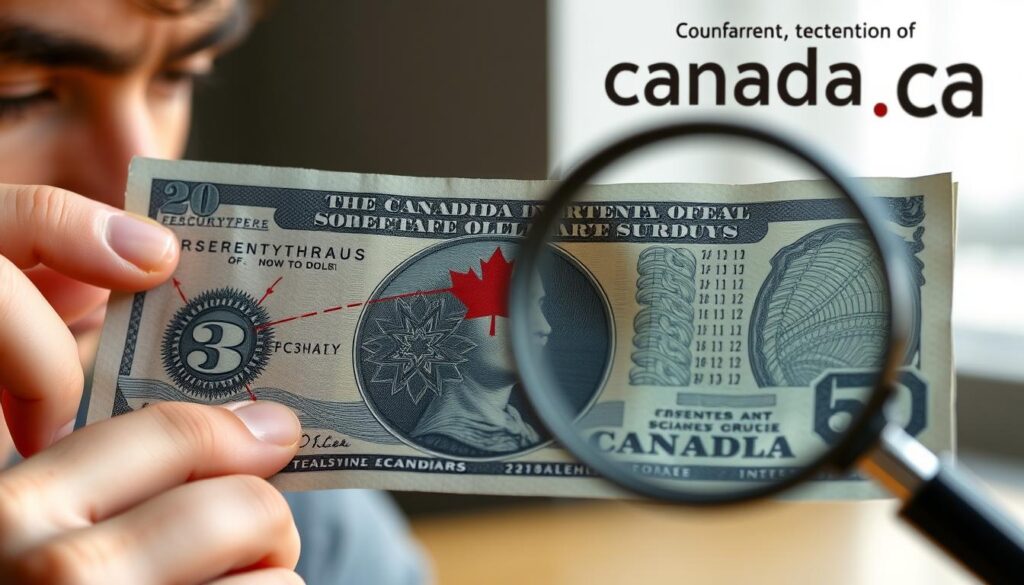
Be cautious of low prices and unauthorized sellers. Watch for missing warranty cards or outdated software on electronics. Trust your gut if something feels off about a product or purchase.
Your Rights When Encountering Counterfeit Goods
Canadian laws protect you if you unknowingly buy fake items. You’re usually entitled to a full refund from the seller. Credit cards often offer chargeback protection for fraudulent purchases.
Online sellers must provide accurate product descriptions by law. Misrepresenting fake products as real can lead to penalties. You may have grounds for a civil claim if a fake causes harm.
Keep all receipts, packaging, and seller communications as evidence. Document any safety issues or product failures. This information helps when seeking help from consumer protection agencies.
Reporting Procedures and Resources
Report fake products to protect others and support legitimate businesses. Contact the Canadian Anti-Fraud Centre online or at 1-888-495-8501. Provide details about the fake item and where you bought it.
For urgent concerns, especially with dangerous fakes, call your local police. Report fake drugs to Health Canada and counterfeit electronics to the Canadian Standards Association.
Use Crime Stoppers (1-800-222-TIPS) for anonymous reporting. Contact the RCMP’s Intellectual Property Crime unit for major counterfeiting operations. Your report helps authorities stop fake product distribution in Canada.
Conclusion: The Evolving Landscape of Counterfeiting in Canada
Counterfeiters in Canada are using advanced methods as technology progresses. Digital marketplaces and new printing tech pose challenges for law enforcement and businesses. The fight against fake products and currency demands constant adaptation.
Your knowledge of anti-counterfeiting measures is vital in this ongoing battle. Holographic elements on banknotes and QR codes help identify real items. The Bank of Canada and RCMP are creating new security features to outsmart counterfeiters.
Canadian businesses focus on supply chain security to protect against counterfeiting. Many use track-and-trace tech to verify product authenticity. These systems create digital “fingerprints” that follow genuine products throughout their lifecycle.
Laws are changing to address these challenges. Recent Criminal Code updates show Canada’s dedication to stronger enforcement. Understanding these laws helps you act when you spot suspicious goods.
Protecting Canada’s economy requires teamwork between agencies, businesses, and informed consumers like you. By using this guide, you help safeguard intellectual property and maintain trust in Canadian products.
FAQ
What is the legal definition of counterfeiting in Canada?
What are the penalties for counterfeiting in Canada?
FAQ
What is the legal definition of counterfeiting in Canada?
In Canada, counterfeiting is the unauthorized copying or altering of currency, documents, or products to deceive. The Trade-marks Act defines it as using a registered trademark without permission. The Criminal Code covers currency counterfeiting, while other laws address intellectual property issues.
For an item to be counterfeit, it must be an unauthorized copy with intent to pass as genuine. Various laws, including the Combating Counterfeit Products Act, govern different aspects of counterfeiting.
What are the penalties for counterfeiting in Canada?
Penalties for counterfeiting in Canada depend on the offense type and severity. Currency counterfeiting can lead to 14 years in prison. Trademark counterfeiting fines can reach
FAQ
What is the legal definition of counterfeiting in Canada?
In Canada, counterfeiting is the unauthorized copying or altering of currency, documents, or products to deceive. The Trade-marks Act defines it as using a registered trademark without permission. The Criminal Code covers currency counterfeiting, while other laws address intellectual property issues.
For an item to be counterfeit, it must be an unauthorized copy with intent to pass as genuine. Various laws, including the Combating Counterfeit Products Act, govern different aspects of counterfeiting.
What are the penalties for counterfeiting in Canada?
Penalties for counterfeiting in Canada depend on the offense type and severity. Currency counterfeiting can lead to 14 years in prison. Trademark counterfeiting fines can reach $1 million with up to five years imprisonment.
Commercial operations face harsher penalties than personal possession. Courts consider factors like operation scale, counterfeit quality, prior offenses, and the defendant’s role when sentencing.
How can I identify counterfeit Canadian currency?
Check security features on Canadian polymer banknotes to spot counterfeits. Look for transparent windows, color-shifting images, and raised ink. Examine microprinting and holographic elements that change when viewed from different angles.
Use the “touch, look, flip” method recommended by the Bank of Canada. Compare suspicious notes with genuine ones, noting differences in paper, print quality, and security features.
What should I do if I unknowingly receive counterfeit money?
If you get counterfeit money, don’t pass it on – it’s illegal. Handle the note minimally and note how you received it. Contact local police to report it and hand over the fake note.
You won’t be reimbursed, but reporting helps track counterfeiting patterns. Be careful with large bills and cash transactions in poor lighting or rushed situations.
How does the Canada Border Services Agency (CBSA) combat counterfeit goods?
The CBSA fights counterfeits through its “Request for Assistance” program. This lets rights holders register their trademarks, enabling officers to detain suspicious shipments. Officers can examine, hold, and seize goods suspected of infringing on registered rights.
The CBSA shares information with rights holders about detained goods. They also work with international partners to target cross-border counterfeiting networks.
What steps can businesses take to protect their products from being counterfeited?
Businesses can protect products by registering intellectual property and using authentication tech like holograms or QR codes. Implement secure supply chain protocols and monitor markets for fakes. File a “Request for Assistance” with CBSA.
Build relationships with law enforcement and anti-counterfeiting groups. Educate customers on identifying genuine products. Take legal action against counterfeiters through cease and desist letters or lawsuits.
How can consumers identify counterfeit products?
Look for unusually low prices and inspect packaging quality. Check for authentication features and verify serial numbers. Buy from authorized retailers and be wary of products lacking proper documentation.
Watch for inconsistent performance in electronics. With drugs, note differences in pill appearance or taste. Trust your instincts – if something seems off, it might be fake.
What’s the difference between counterfeiting and copyright piracy?
Counterfeiting involves unauthorized use of registered trademarks to deceive consumers about a product’s origin. Copyright piracy is the unauthorized reproduction or distribution of copyrighted works like music or software.
Both involve intellectual property infringement, but counterfeiting focuses on product source deception. Piracy targets unauthorized content duplication. Legal remedies differ for each under Canadian law.
Where can I report suspected counterfeit goods in Canada?
Report general counterfeits to the Canadian Anti-Fraud Centre at 1-888-495-8501 or online. For fake currency, contact local police or RCMP. Report online counterfeits to the selling platform and brand owner.
Use industry-specific channels like Health Canada for fake drugs. Anonymous reports can be made through Crime Stoppers at 1-800-222-TIPS. Businesses can find resources at the Canadian Intellectual Property Office.
What recent changes have been made to Canada’s anti-counterfeiting laws?
The Combating Counterfeit Products Act strengthened Canada’s anti-counterfeiting laws. It created new offenses for commercial-scale trademark counterfeiting and expanded trademark infringement definitions. The Act gave CBSA more power to detain suspicious goods.
It established a “Request for Assistance” program for intellectual property owners. The Canada-United States-Mexico Agreement further enhanced IP protections and enforcement mechanisms.
What are the health and safety risks of counterfeit products?
Counterfeit products bypass quality controls, posing serious risks. Fake drugs may have wrong doses or harmful ingredients. Counterfeit electronics can cause fires or shocks. Fake auto parts might fail dangerously.
Counterfeit cosmetics often contain harmful substances like lead or bacteria. Fake food and drinks may have dangerous contaminants. Even counterfeit clothes and toys can have toxic materials or choking hazards.
How does product authentication technology help combat counterfeiting?
Authentication tech creates hard-to-copy markers of legitimacy. QR codes and RFID tags allow instant verification. Blockchain creates tamper-proof supply chain records. Special inks, micro-text, and holograms offer physical authentication.
Serialization systems track individual products. Chemical markers and DNA tagging embed microscopic identifiers. These technologies make counterfeiting harder and more expensive while enabling quick verification.
million with up to five years imprisonment.
Commercial operations face harsher penalties than personal possession. Courts consider factors like operation scale, counterfeit quality, prior offenses, and the defendant’s role when sentencing.
How can I identify counterfeit Canadian currency?
Check security features on Canadian polymer banknotes to spot counterfeits. Look for transparent windows, color-shifting images, and raised ink. Examine microprinting and holographic elements that change when viewed from different angles.
Use the “touch, look, flip” method recommended by the Bank of Canada. Compare suspicious notes with genuine ones, noting differences in paper, print quality, and security features.
What should I do if I unknowingly receive counterfeit money?
If you get counterfeit money, don’t pass it on – it’s illegal. Handle the note minimally and note how you received it. Contact local police to report it and hand over the fake note.
You won’t be reimbursed, but reporting helps track counterfeiting patterns. Be careful with large bills and cash transactions in poor lighting or rushed situations.
How does the Canada Border Services Agency (CBSA) combat counterfeit goods?
The CBSA fights counterfeits through its “Request for Assistance” program. This lets rights holders register their trademarks, enabling officers to detain suspicious shipments. Officers can examine, hold, and seize goods suspected of infringing on registered rights.
The CBSA shares information with rights holders about detained goods. They also work with international partners to target cross-border counterfeiting networks.
What steps can businesses take to protect their products from being counterfeited?
Businesses can protect products by registering intellectual property and using authentication tech like holograms or QR codes. Implement secure supply chain protocols and monitor markets for fakes. File a “Request for Assistance” with CBSA.
Build relationships with law enforcement and anti-counterfeiting groups. Educate customers on identifying genuine products. Take legal action against counterfeiters through cease and desist letters or lawsuits.
How can consumers identify counterfeit products?
Look for unusually low prices and inspect packaging quality. Check for authentication features and verify serial numbers. Buy from authorized retailers and be wary of products lacking proper documentation.
Watch for inconsistent performance in electronics. With drugs, note differences in pill appearance or taste. Trust your instincts – if something seems off, it might be fake.
What’s the difference between counterfeiting and copyright piracy?
Counterfeiting involves unauthorized use of registered trademarks to deceive consumers about a product’s origin. Copyright piracy is the unauthorized reproduction or distribution of copyrighted works like music or software.
Both involve intellectual property infringement, but counterfeiting focuses on product source deception. Piracy targets unauthorized content duplication. Legal remedies differ for each under Canadian law.
Where can I report suspected counterfeit goods in Canada?
Report general counterfeits to the Canadian Anti-Fraud Centre at 1-888-495-8501 or online. For fake currency, contact local police or RCMP. Report online counterfeits to the selling platform and brand owner.
Use industry-specific channels like Health Canada for fake drugs. Anonymous reports can be made through Crime Stoppers at 1-800-222-TIPS. Businesses can find resources at the Canadian Intellectual Property Office.
What recent changes have been made to Canada’s anti-counterfeiting laws?
The Combating Counterfeit Products Act strengthened Canada’s anti-counterfeiting laws. It created new offenses for commercial-scale trademark counterfeiting and expanded trademark infringement definitions. The Act gave CBSA more power to detain suspicious goods.
It established a “Request for Assistance” program for intellectual property owners. The Canada-United States-Mexico Agreement further enhanced IP protections and enforcement mechanisms.
What are the health and safety risks of counterfeit products?
Counterfeit products bypass quality controls, posing serious risks. Fake drugs may have wrong doses or harmful ingredients. Counterfeit electronics can cause fires or shocks. Fake auto parts might fail dangerously.
Counterfeit cosmetics often contain harmful substances like lead or bacteria. Fake food and drinks may have dangerous contaminants. Even counterfeit clothes and toys can have toxic materials or choking hazards.
How does product authentication technology help combat counterfeiting?
Authentication tech creates hard-to-copy markers of legitimacy. QR codes and RFID tags allow instant verification. Blockchain creates tamper-proof supply chain records. Special inks, micro-text, and holograms offer physical authentication.
Serialization systems track individual products. Chemical markers and DNA tagging embed microscopic identifiers. These technologies make counterfeiting harder and more expensive while enabling quick verification.

